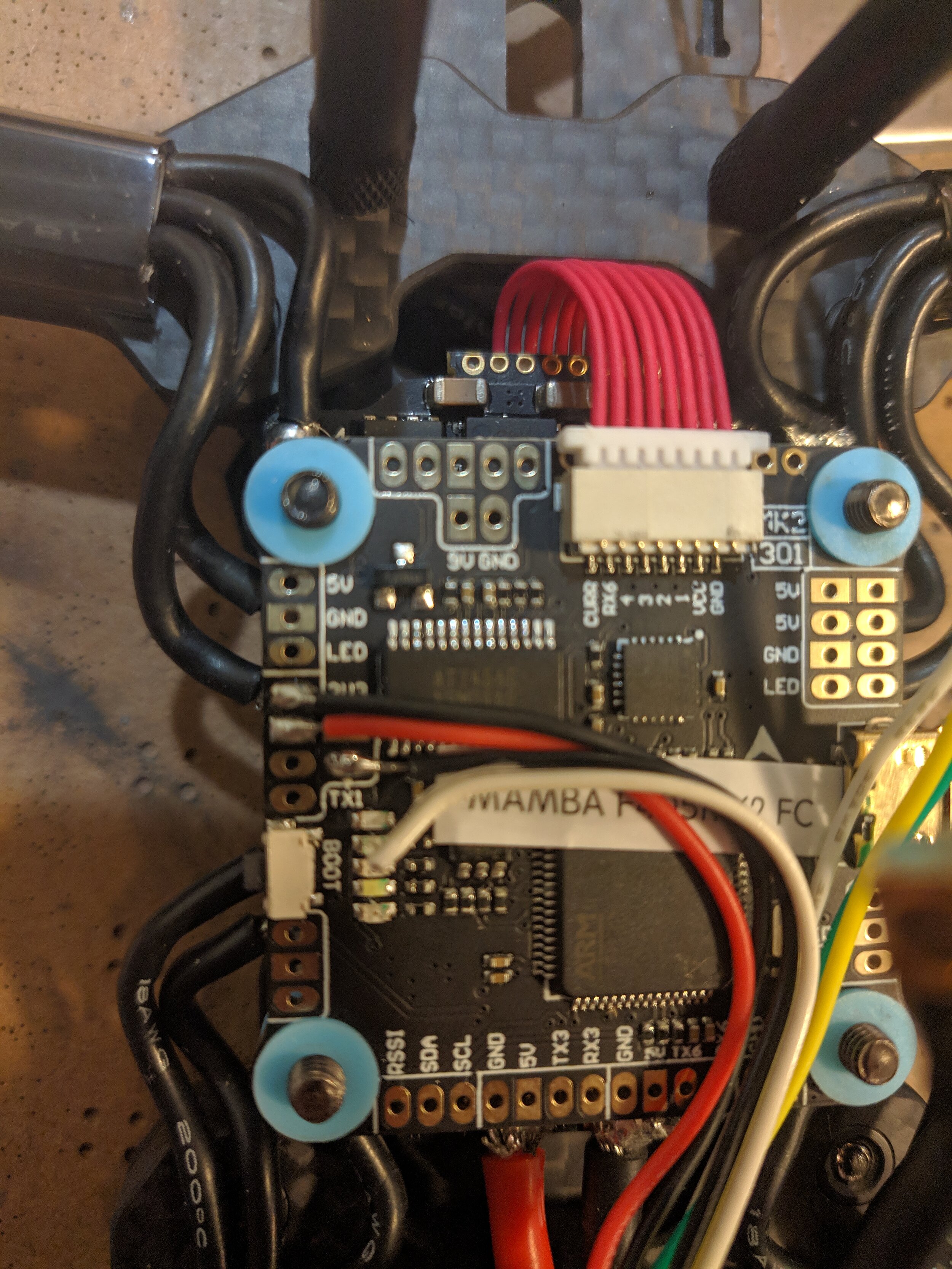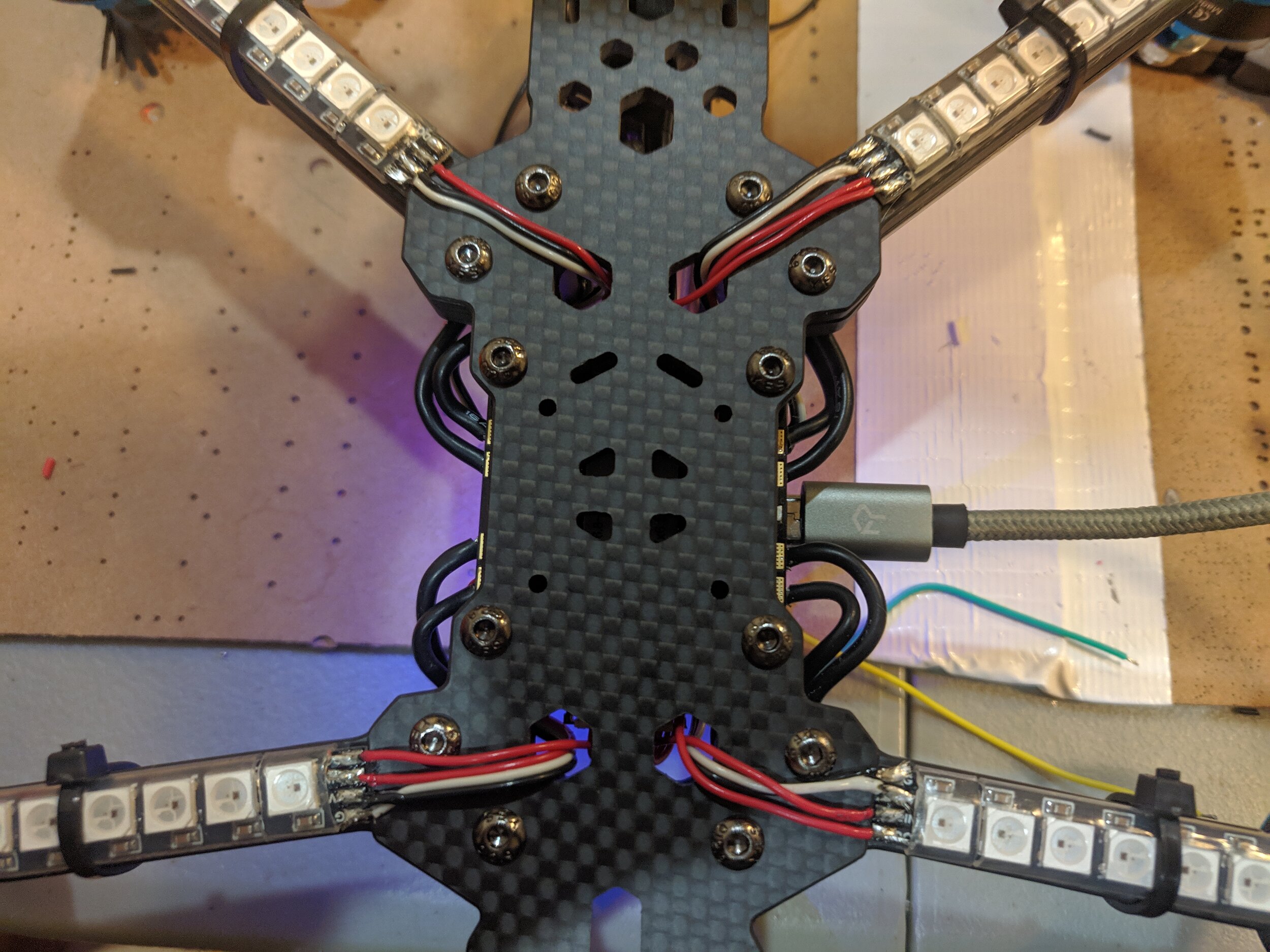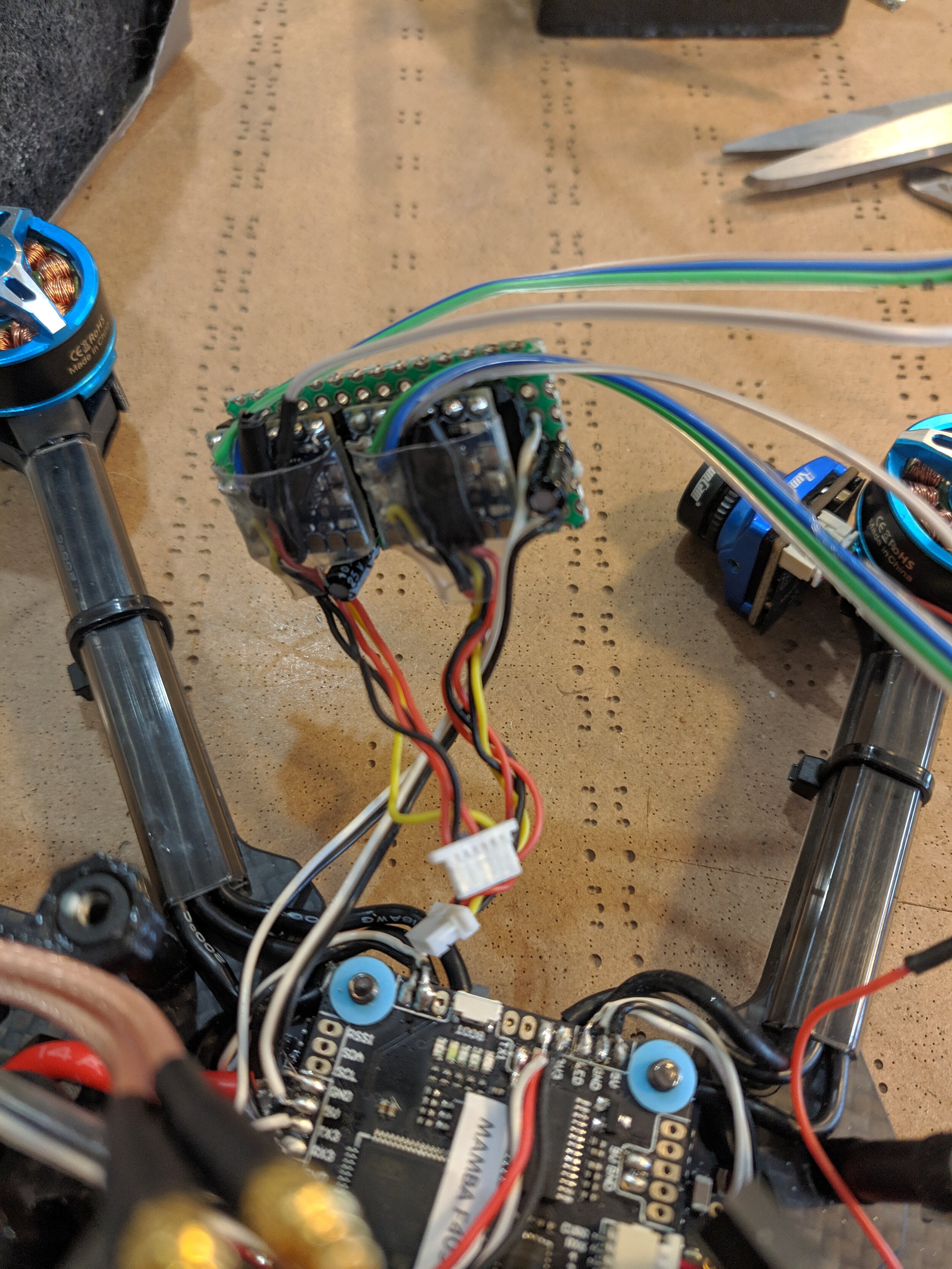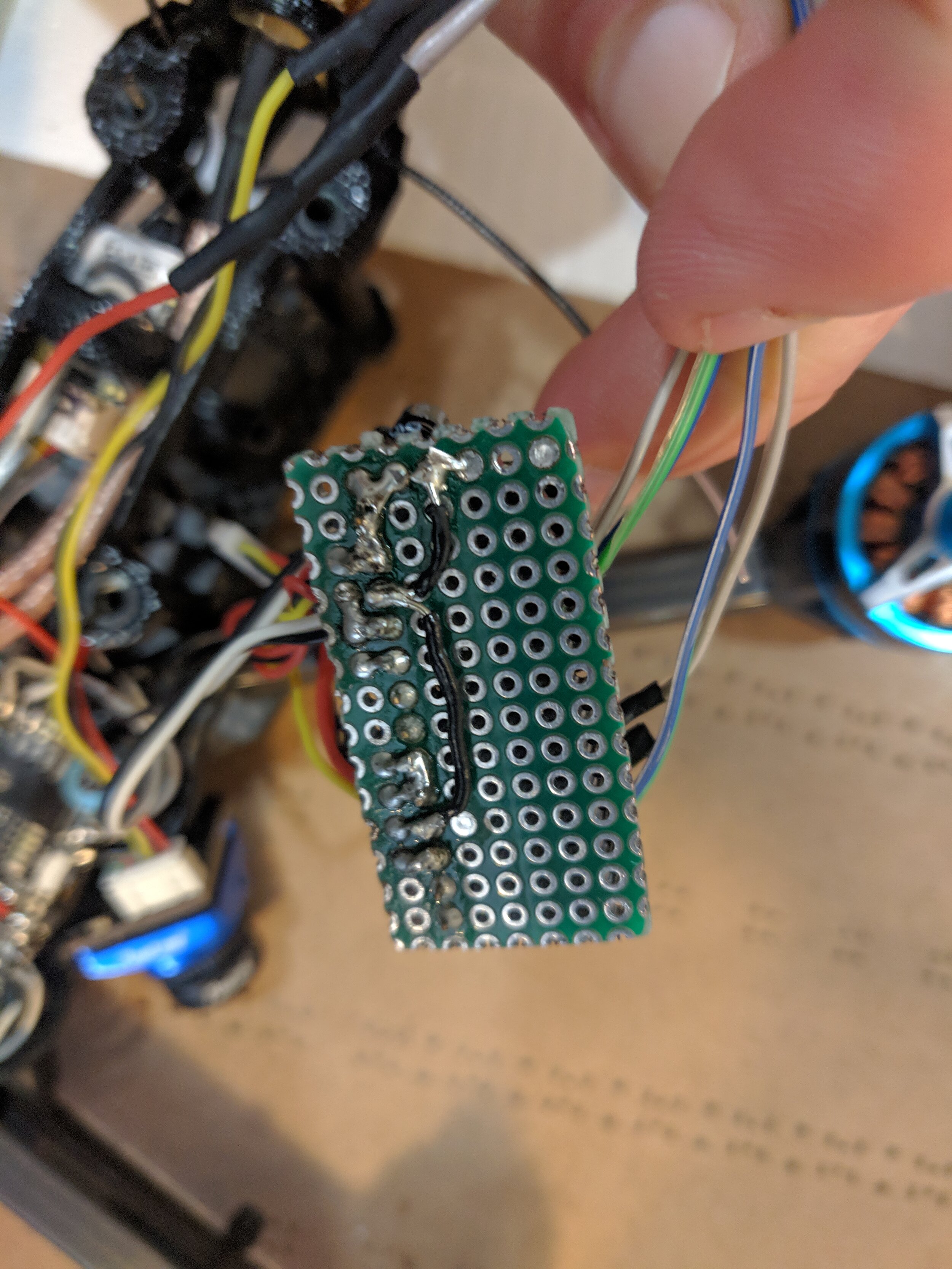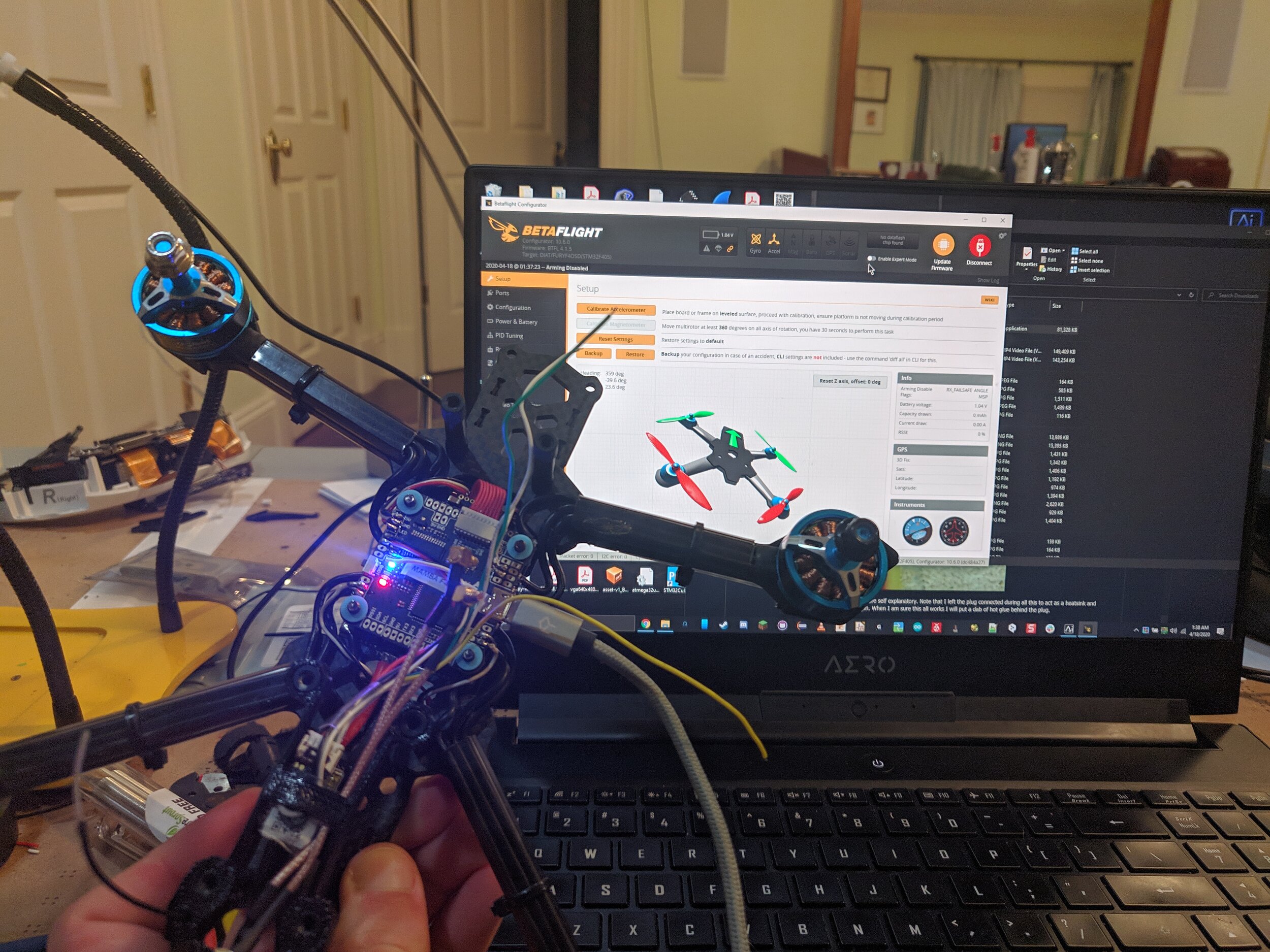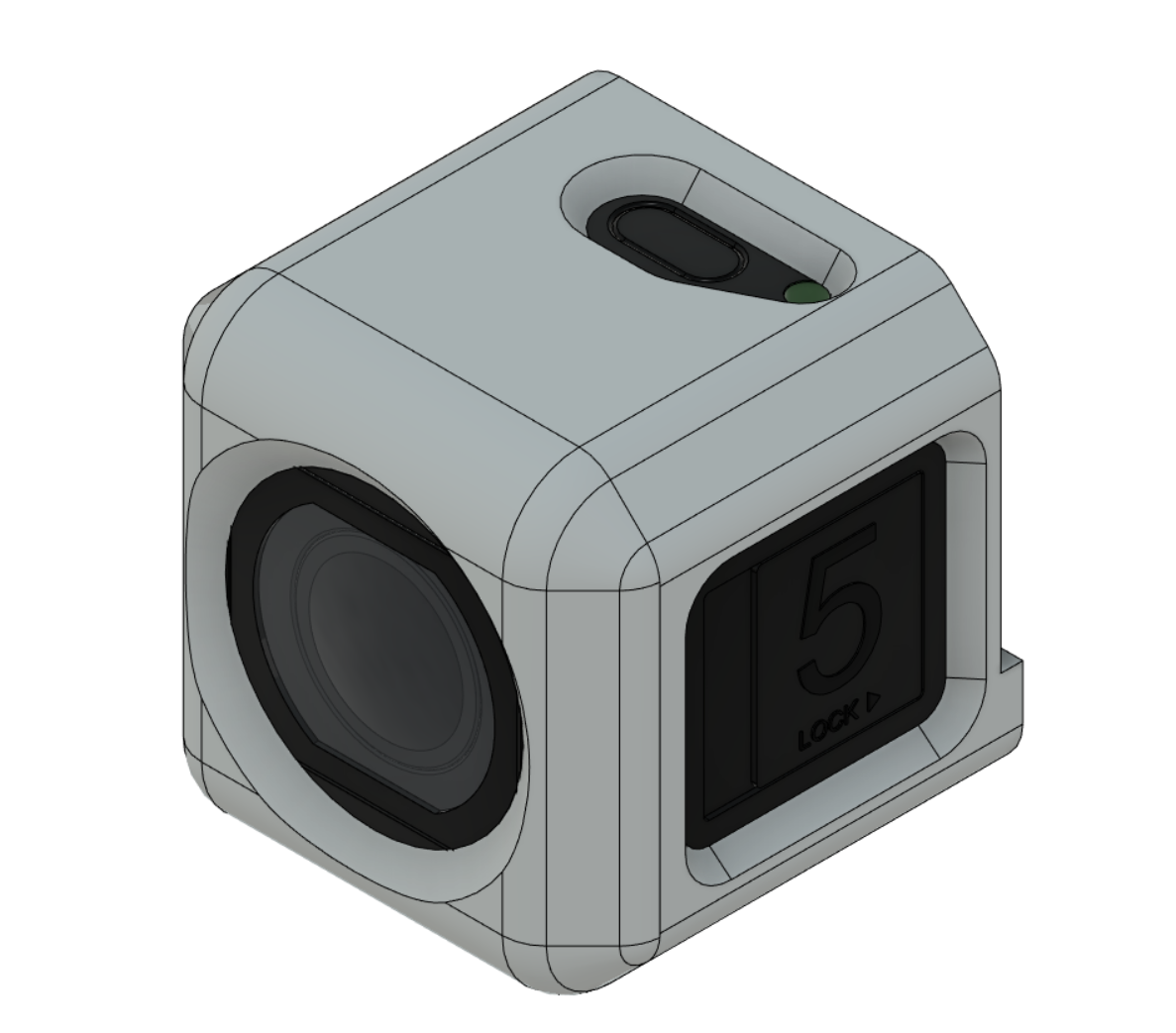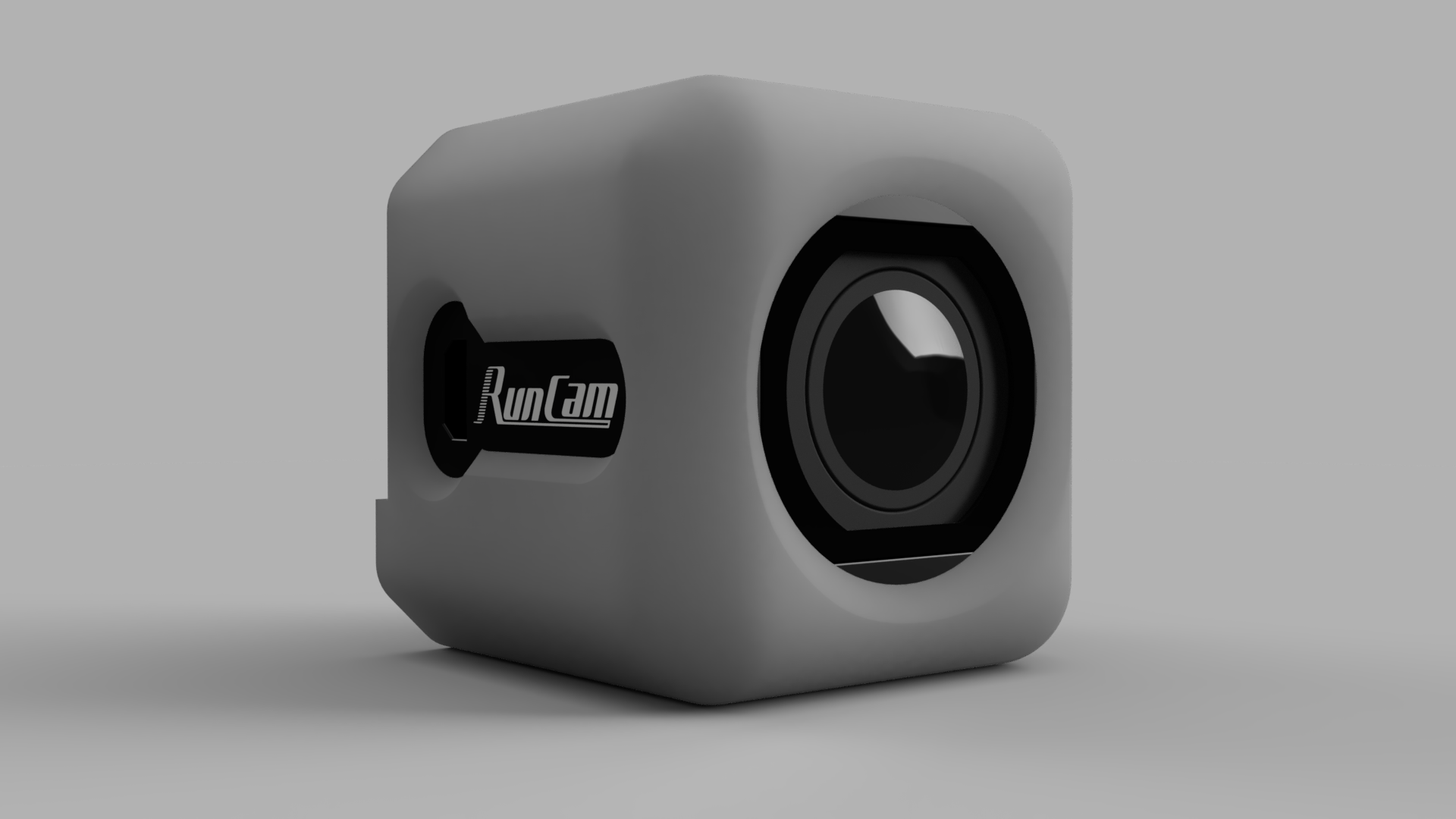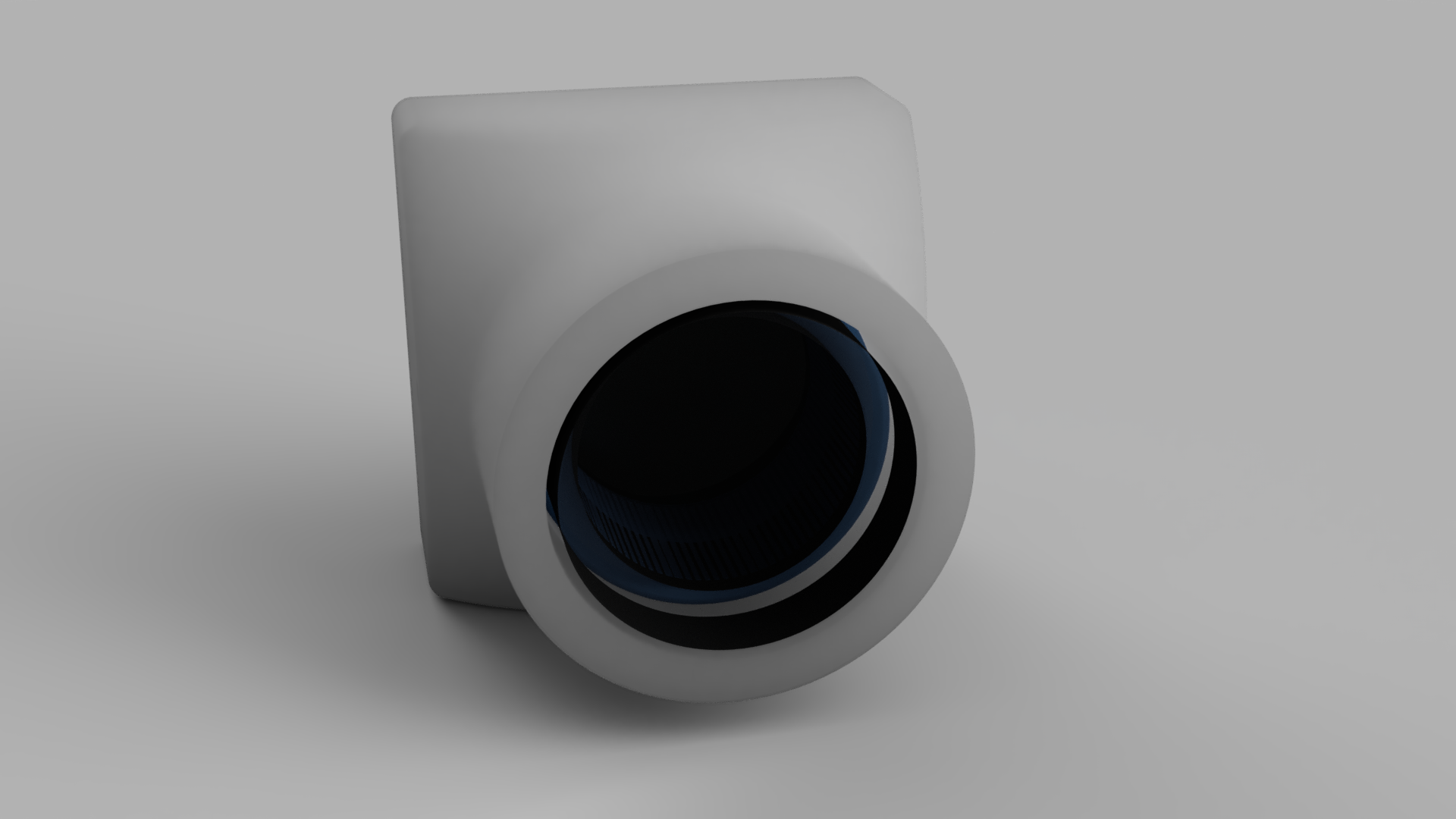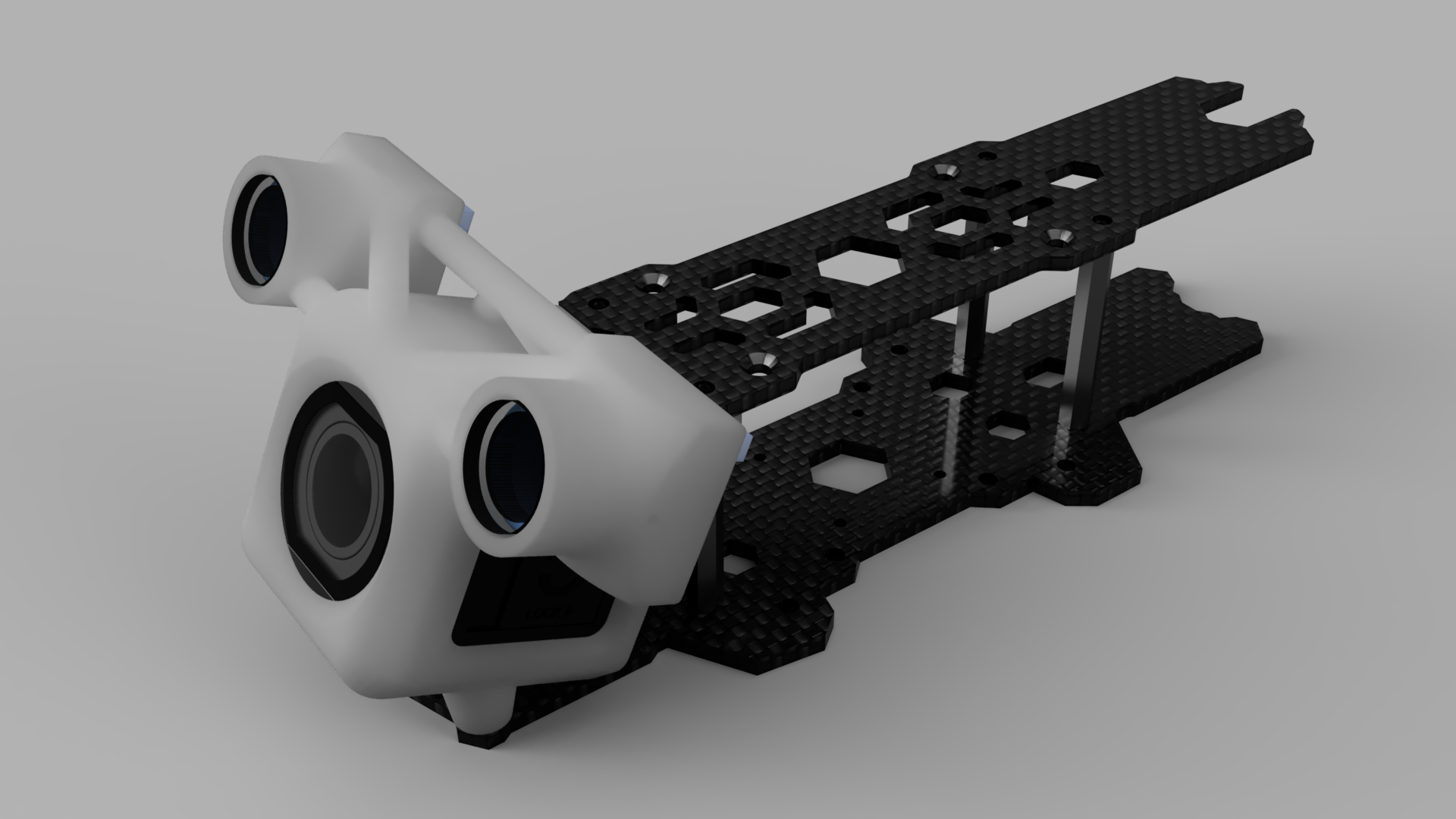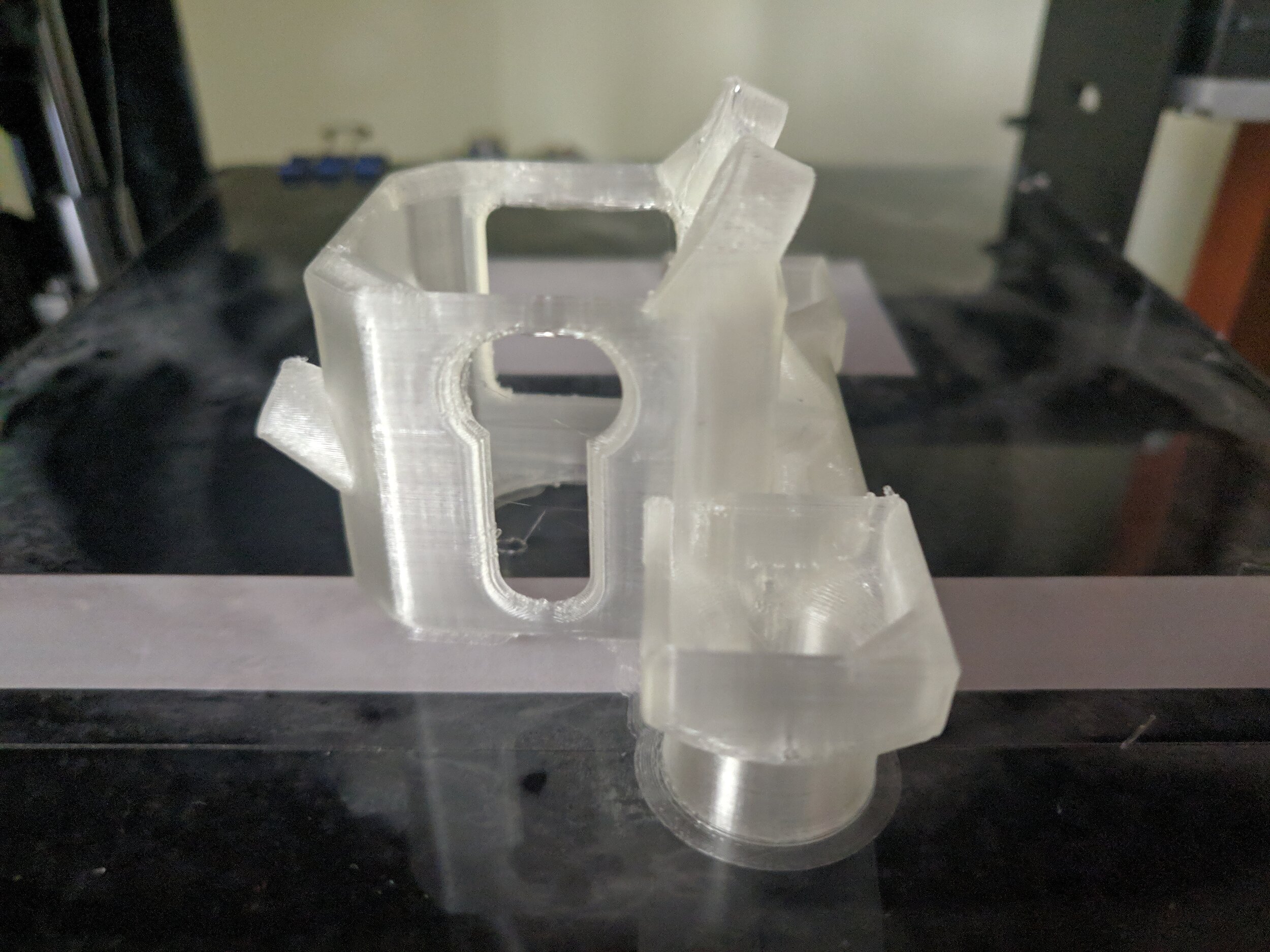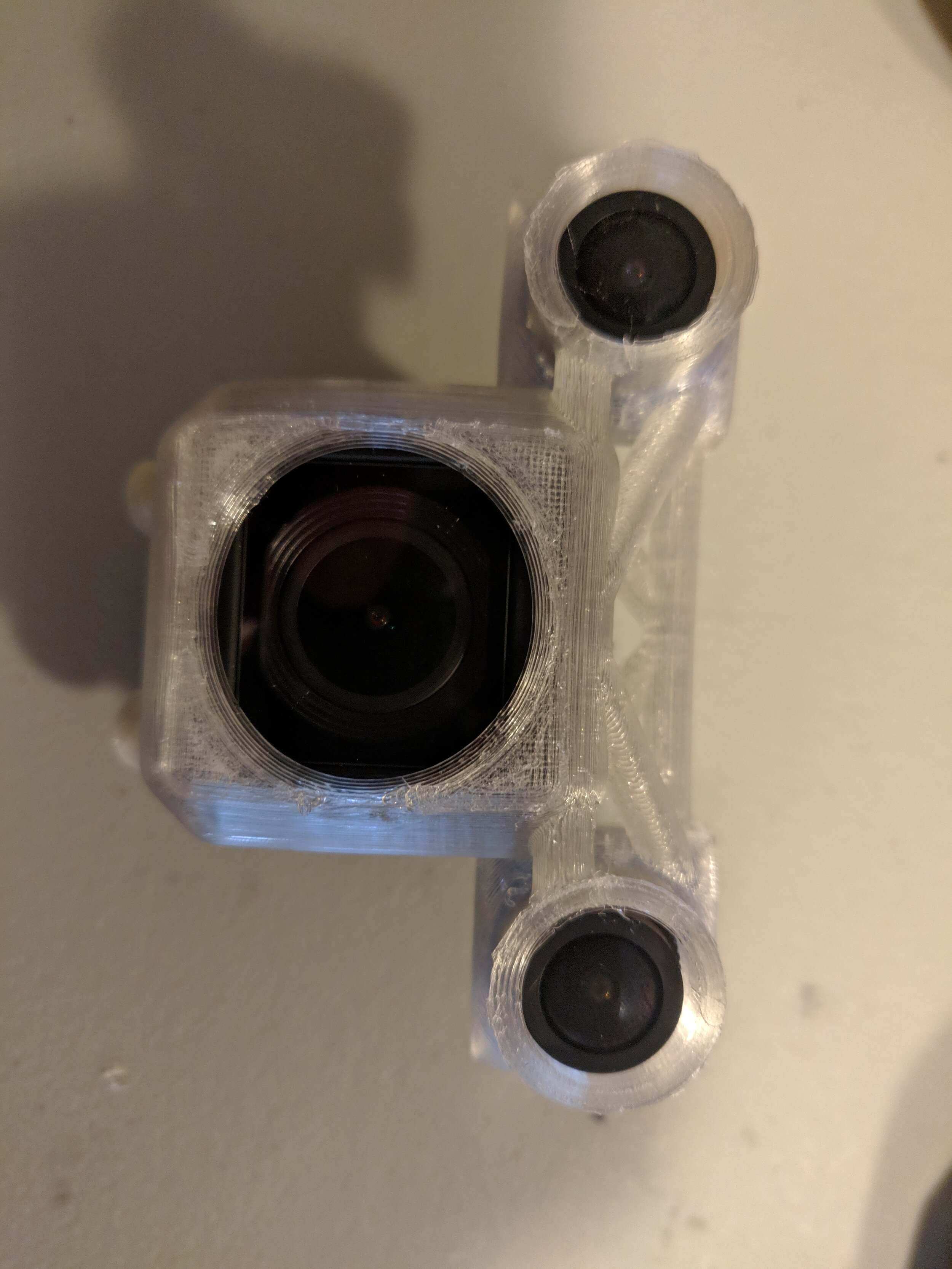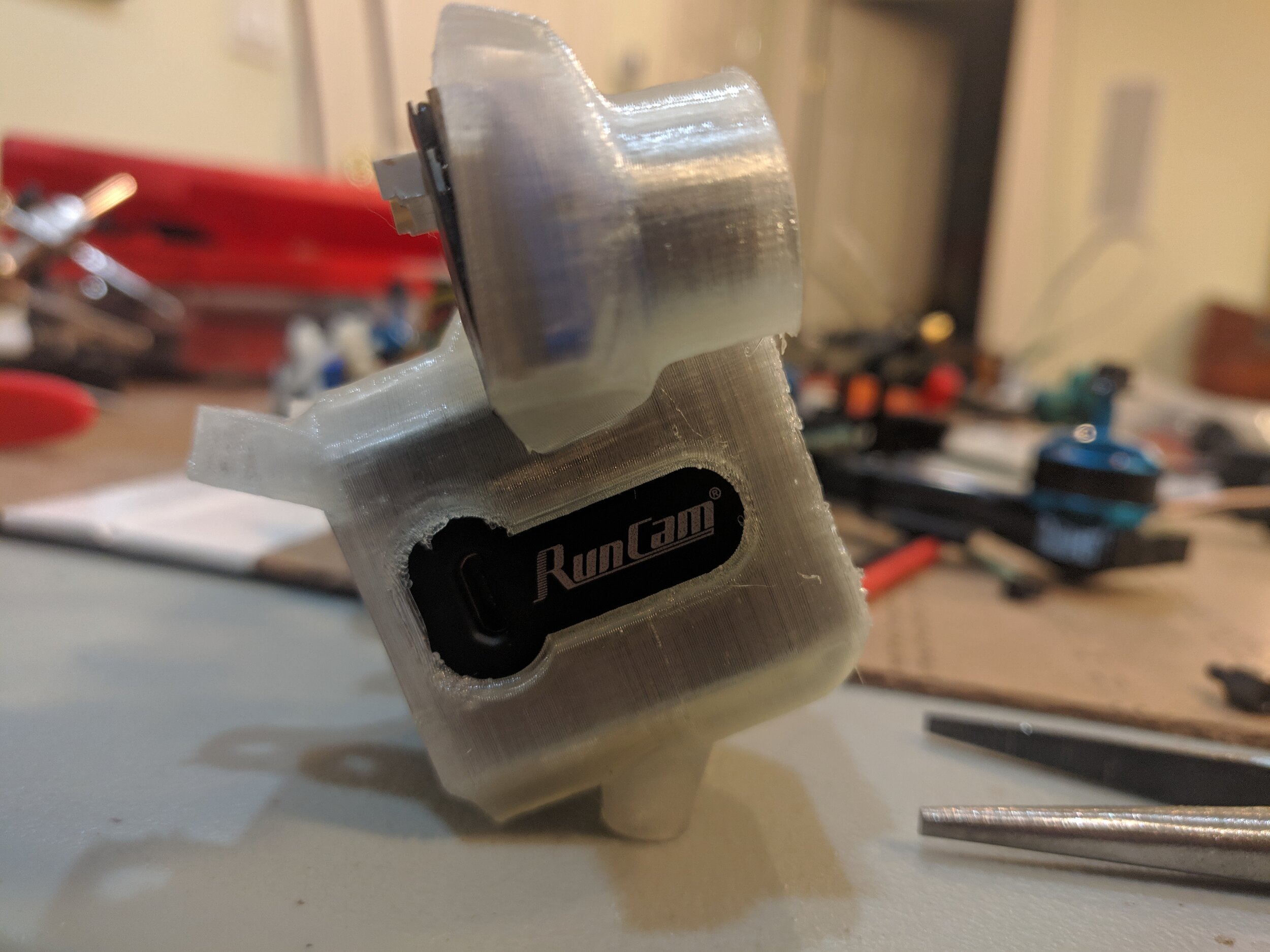STEREOSCOPIC FPV DRONE:
This is a two-part project. See also the Stereoscopic FPV goggles that complete the video transmission system.
FPV (first person view) drones are a unique flying experience. Using a small camera mounted on the front of the drone and a pair of goggles, the pilot is placed virtually in the “cockpit” of the craft, despite piloting it remotely. This makes flying much easier and much more fun, as one experiences the aerial movements as they are making them.
However, this is traditionally accomplished with one camera, one video stream, and both eyes receiving the same image. This sacrifices depth perception, which is critical because it is how humans perceive objects in 3D. It makes the experience less immersive and less intuitive.
I set out to create a drone with two cameras each streaming a continuous feed to one eye, to enhance the flying experience. While this has been done before, the current method involves stitching the image from two cameras into one frame, which is then separated by the goggles for viewing. This cuts the horizontal resolution of the video signal in half for the two eyes, significantly degrading the flying experience.
Here is my solution:
Each video feed is independently processed and broadcast to the pilot, meaning no quality compromises have to be made. The disadvantage is that no commercially available FPV goggles currently support this type of setup, so I have to modify them.
Drone Construction:
Aside from the camera setup, the drone has a fairly standard construction, made using off the shelf parts. Some snapshots of the build process:
Designing the Camera Mount:
This drone has a very nonstandard camera arrangement, with one big camera for high quality videos, and the two smaller cameras for the pilot’s view. This meant I had to design and fabricate a mount for all of them. I chose to 3D print it because that gave me a lot of freedom in the design. I started by designing shells for each of the cameras and then integrating them into once piece.
3D model of camera mount:
Fabricating the Camera Mount:
The camera mount was 3D printed in Recreus 95A flexible filament. The flexibility of the filament helps absorb vibrations from the propellers of the drone and allows it to handle crashes without breaking.



